A little history
Though the European popular classes had more and more access to automobile during the Thirties, it remained for most an inaccessible dream. Many manufacturers tried to make it come true by offering small, more affordable models. For Renault, this car was called the Juvaquatre.
Louis Renault had stumbled upon the Opel Olympia during a trip to Germany, an experience that made him decide that his company should too build a car that would be both modern and compact. Placing itself just below the Primaquatre and Celtaquatre, the 1.0-litre Juvaquatre was introduced during the Paris motor show, held in October 1937. It was the first Renault to feature all-independent suspension, the first to have a unitized body, the first to be fitted with aerodynamic flush-fitting headlights. Actually, it didn’t look like a Renault at all, and that wasn’t without reason that Opel immediately sued the French company, claiming that the Juvaquatre was a copy of its Olympia and Kadett models.
The Juvaquatre was put on sale a few months after its introduction. The initial offer included 2-door saloons, coupes, convertible saloons and vans. No Juvaquatre had four doors, a choice made by Louis Renault himself. Most of the ads run in the press at that time tried to demonstrate that the wide doors of the Juvaquatre made the car as practical as a four-door saloon. Customers weren’t convinced though, and many turned to the Simca 8 (the local version of the Fiat 1100) and later to the Peugeot 202. Renault had to revise his point of view and allow the development of a four-door Juvaquatre, which joined the range in 1939 – the company then shamelessly based its communication on the superiority of four doors versus two…
War soon slowed down, then interrupted the Juvaquatre’s production. A simplified range was re-launched in 1946. The arrival of the ground-breaking 4CV didn’t end its elder sister’s career, though the later adopted the new car’s 750 cc engine, which offered comparable performance and better fuel economy. The passenger versions finally retired during the first half of the Fifties, but the van and a two-door estate which in the meantime had been added to the company’s offer were maintained in production. There was indeed a commercial version of the 4CV. Its main modifications were the replacement of the rear doors’ windows by metal sheets and the removal of the rear seats. Loading was through these rear doors, as it was obviously impossible to add a rear hatch to a rear-engine car – hence the reason for the survival of the commercial versions of the Juvaquatre, though they lost their name from then on to be simply called “300 kg”, from their rated payload.
The Renault 300 kg’s identity would change one last time. In 1956, the car received the 850 cc engine of the new Dauphine, and became the Dauphinoise. This was the very last guise under which the “Juva” was produced. The last one left the Billancourt factory in 1960. A little more than a quarter million had been produced, quite a feat in those times.
About the models
I didn’t have a look at these models since a long time, so I’ll refrain to make any comment and give ratings until I do.
Model: Renault Juvaquatre
Year: 1939
Maker: Eligor
Scale: 1/43
Distributed by: Atlas as no.25 of its Les petits utilitaires des années 50-60 series
Acquired: second hand with neither stand nor box, in October 2007, in Brive, France
A pre-war Gendarmerie vehicle.
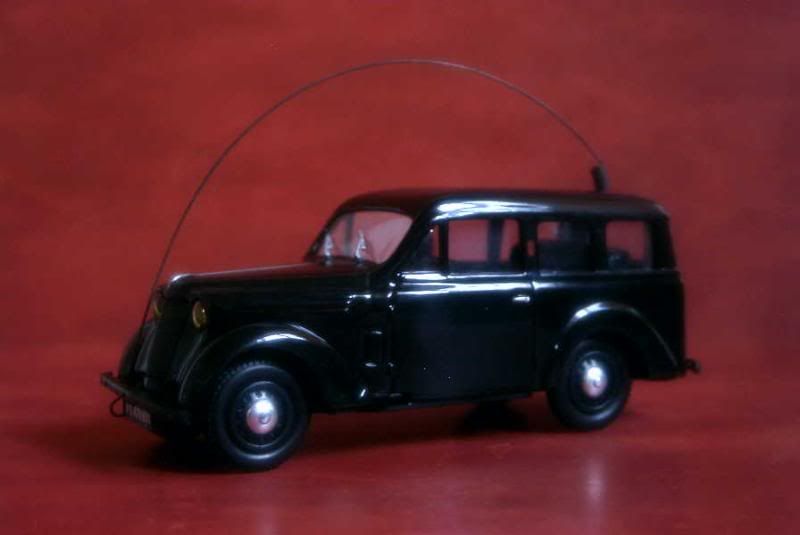
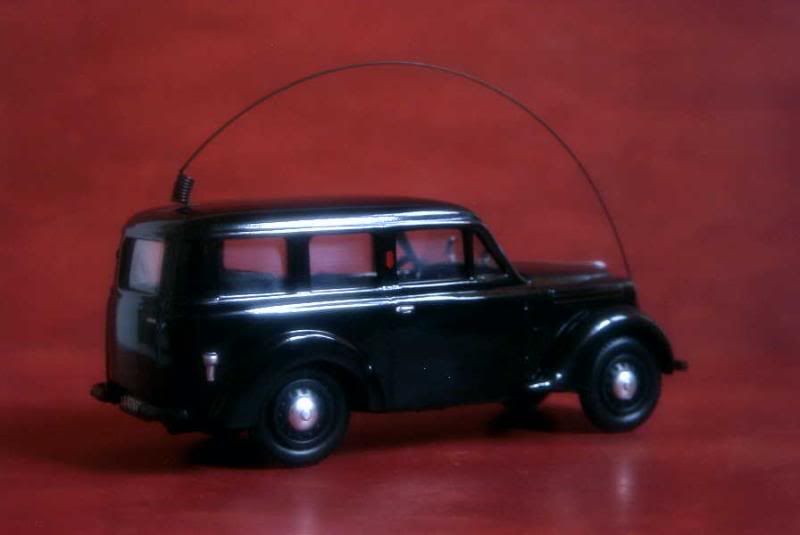
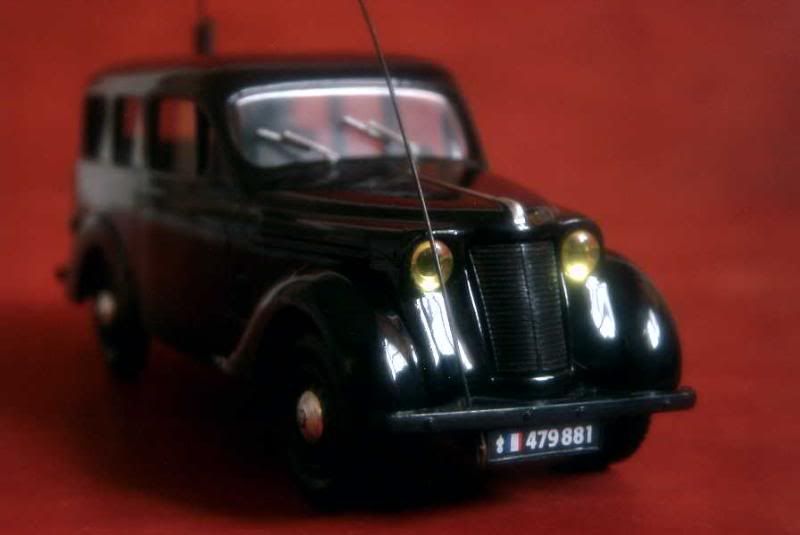
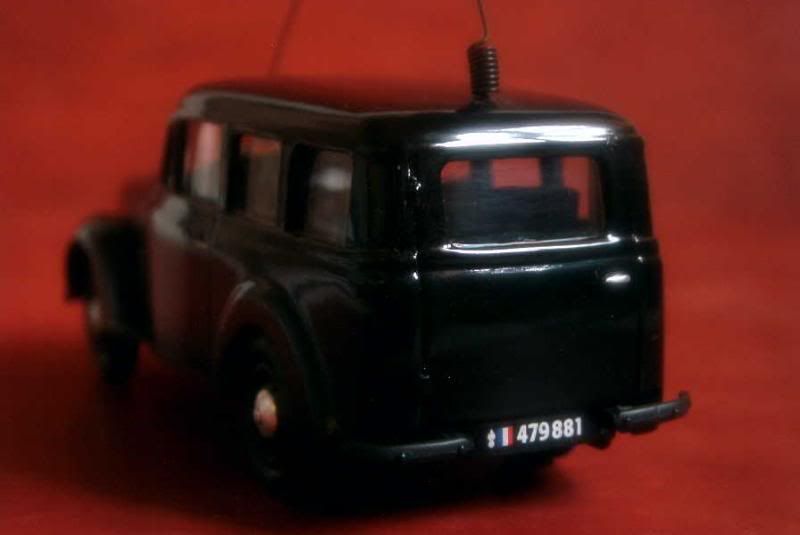
Model: Renault Juvaquatre
Year: 1946
Maker: Ixo
Scale: 1/43
Distributed by: Altaya as no.58 of its Nos Chères Voitures d'Antan press series
Acquired: brand new, in May 2006, in Souillac, France
The standard saloon, identical to the model initially launched in 1939.

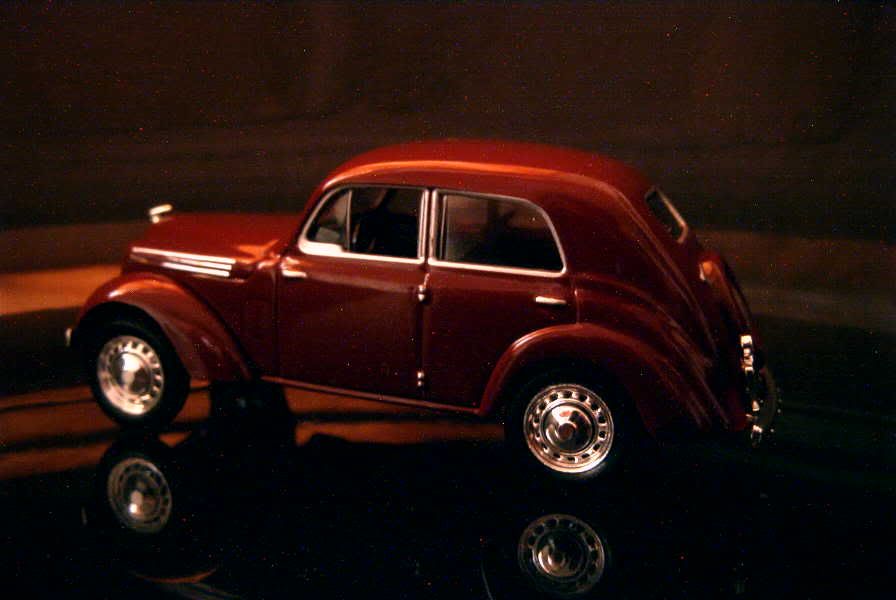
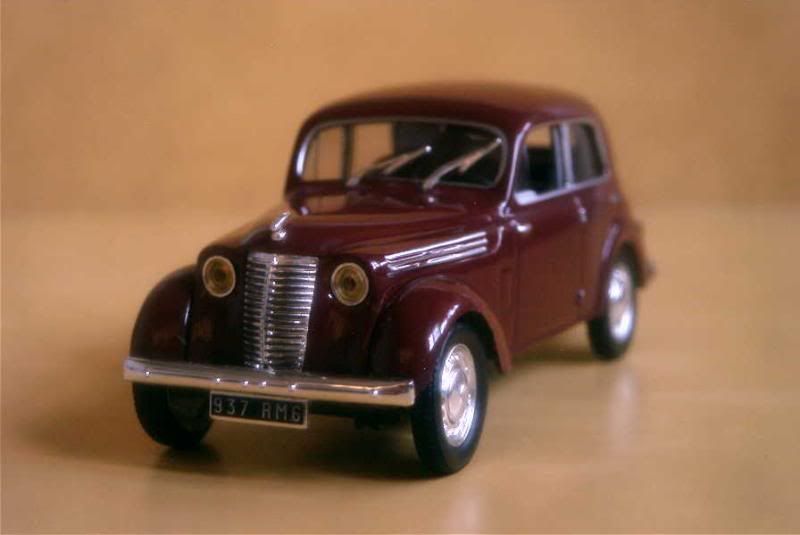

Model: Renault Juvaquatre
Year: 1946
Maker: Norev
Scale: 1/43
Distributed by: Atlas as no.3 of its Véhicules postaux d'hier et d'aujourd'hui press series
Acquired: brand new, in July 2006, in Brive, France
A French postal service van.
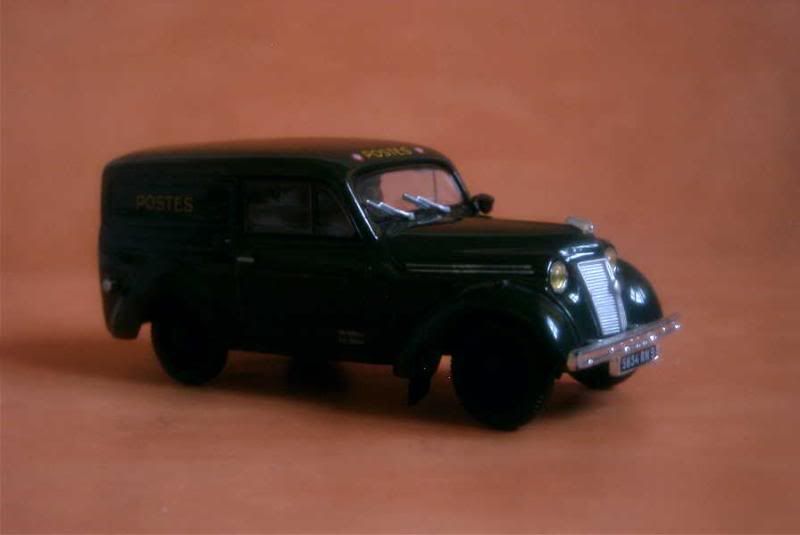

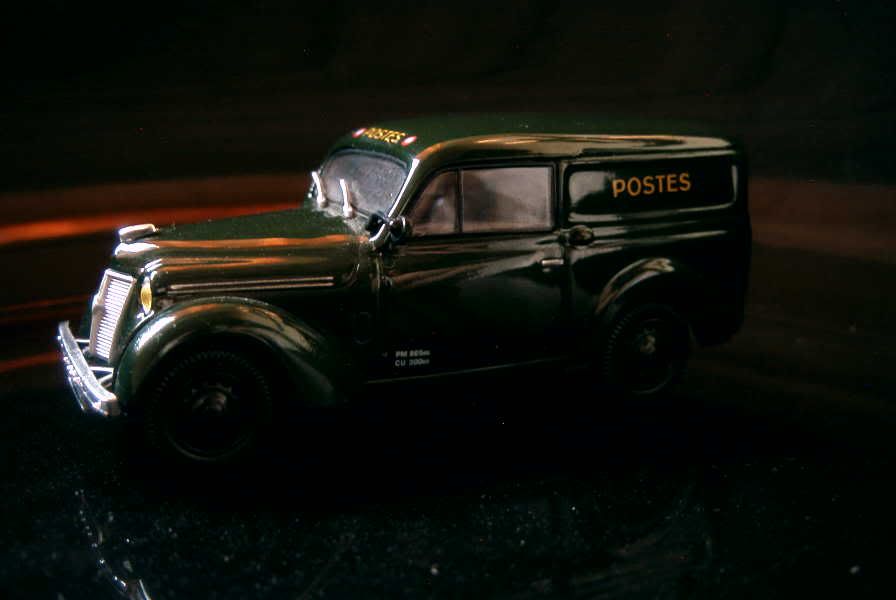
Model: Renault Juvaquatre
Year: 1950
Maker: Ixo
Scale: 1/43
Distributed by: Altaya as no.48 of its Nos Chères Camionnettes d'Antan press series
Acquired: new with neither box nor stand (probably a production overrun or quality control reject), in December 2006, in Hong Kong, S.A.R.
A commercial van owned by Saint-Marc, a soap manufacturer from Bordeaux. I think the brand still exists today, but it has been acquired by German giant Henkel about twenty years ago.
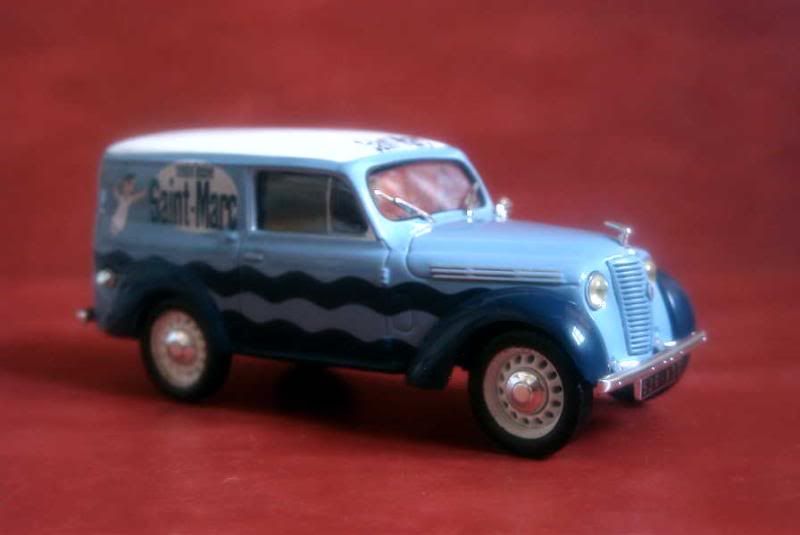
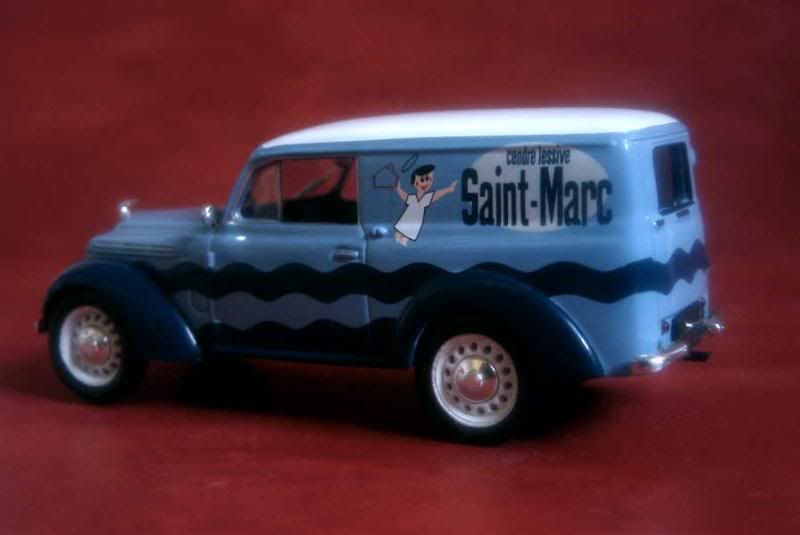
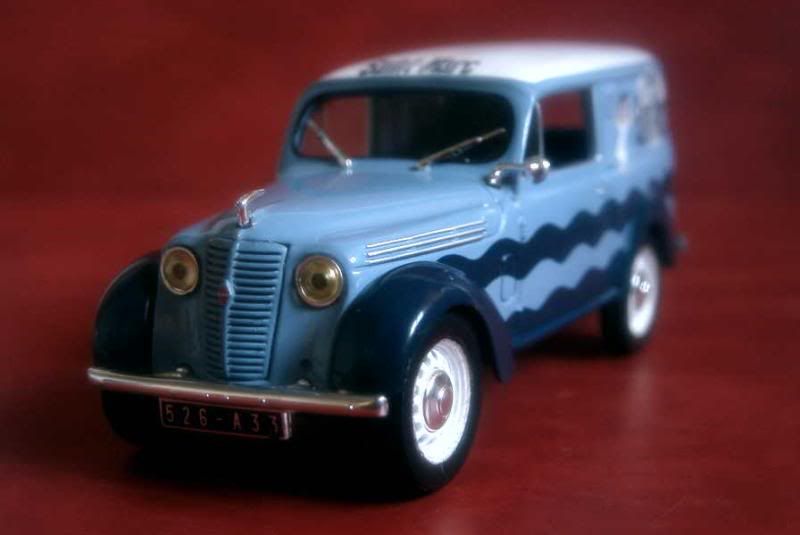
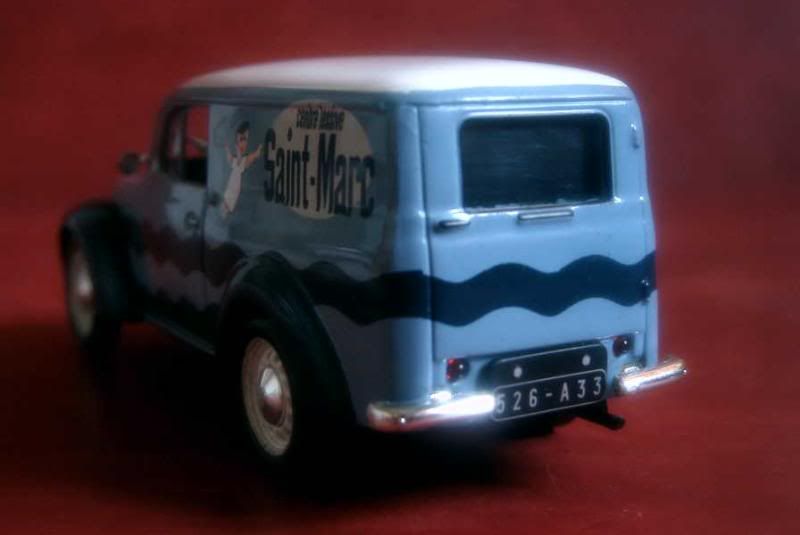

Model: Renault 300 kg
Year: 1955
Maker: Norev
Scale: 1/43
Distributed by: Hachette as no.16 of its Police et Gendarmerie press series
Acquired: brand new, in March 2005, in Souillac, France
Norev calls this model a Juvaquatre, though it should be a 300 kg instead if the date given is correct. I suppose that the die-cast manufacturer knew this, but estimated that the Juvaquatre name was much more suggestive for the majority of collectors.
Though I said above that I won't make comments about quality, I cannot avoid mentioning that this die-cast is probably the one among my whole collection which has suffered the most from the effects of passing time - note on the second picture the pitiful state of the paint.

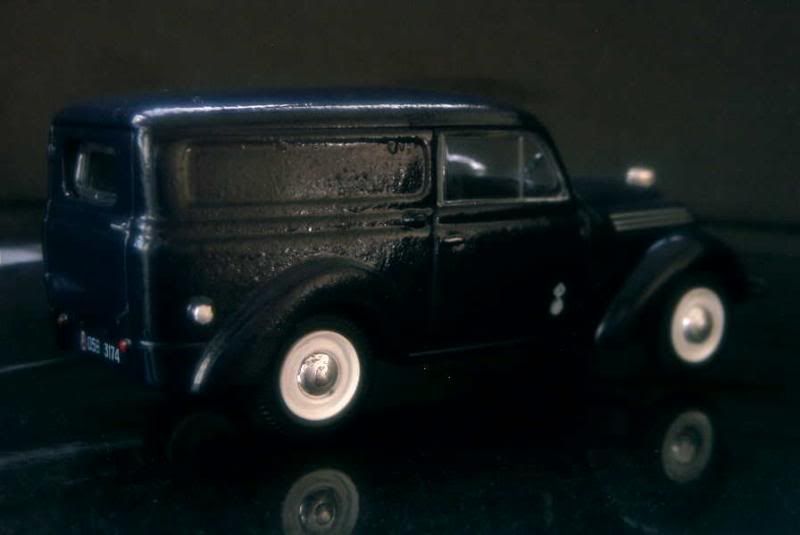
Model: Renault Dauphinoise
Year: 1955
Maker: Ixo
Scale: 1/43
Distributed by: Altaya as no.63 of its Nos Chères Voitures d'Antan press series
Acquired: brand new, in July 2006, in Souillac, France
A late-series two-door estate.
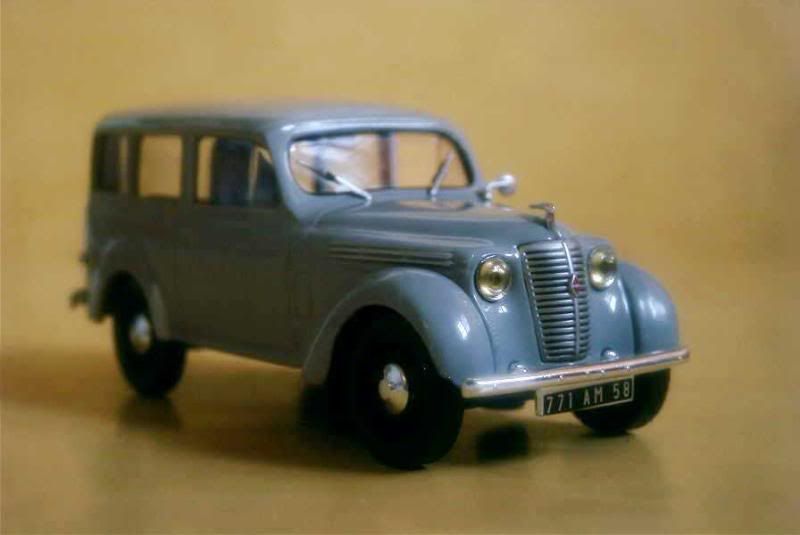

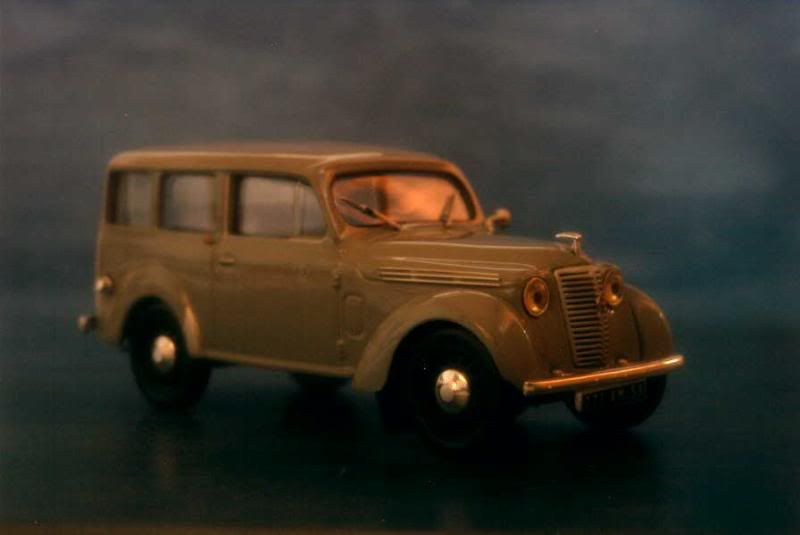
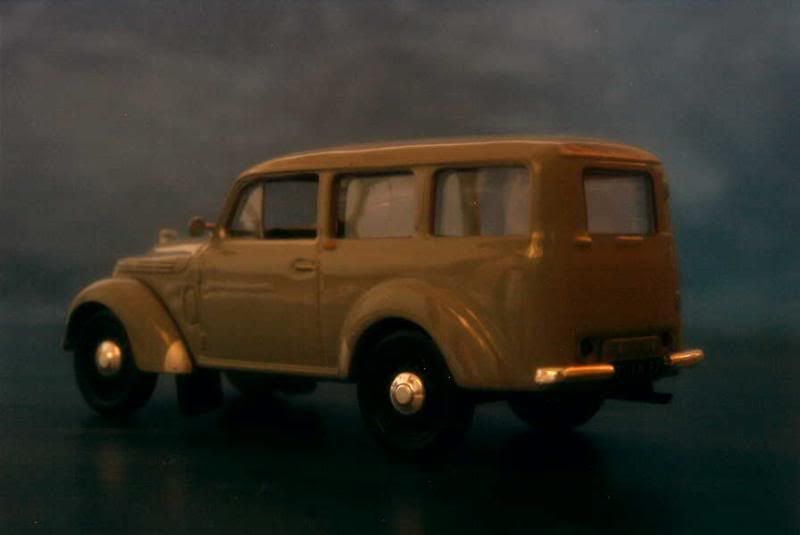
Though the European popular classes had more and more access to automobile during the Thirties, it remained for most an inaccessible dream. Many manufacturers tried to make it come true by offering small, more affordable models. For Renault, this car was called the Juvaquatre.
Louis Renault had stumbled upon the Opel Olympia during a trip to Germany, an experience that made him decide that his company should too build a car that would be both modern and compact. Placing itself just below the Primaquatre and Celtaquatre, the 1.0-litre Juvaquatre was introduced during the Paris motor show, held in October 1937. It was the first Renault to feature all-independent suspension, the first to have a unitized body, the first to be fitted with aerodynamic flush-fitting headlights. Actually, it didn’t look like a Renault at all, and that wasn’t without reason that Opel immediately sued the French company, claiming that the Juvaquatre was a copy of its Olympia and Kadett models.
The Juvaquatre was put on sale a few months after its introduction. The initial offer included 2-door saloons, coupes, convertible saloons and vans. No Juvaquatre had four doors, a choice made by Louis Renault himself. Most of the ads run in the press at that time tried to demonstrate that the wide doors of the Juvaquatre made the car as practical as a four-door saloon. Customers weren’t convinced though, and many turned to the Simca 8 (the local version of the Fiat 1100) and later to the Peugeot 202. Renault had to revise his point of view and allow the development of a four-door Juvaquatre, which joined the range in 1939 – the company then shamelessly based its communication on the superiority of four doors versus two…
War soon slowed down, then interrupted the Juvaquatre’s production. A simplified range was re-launched in 1946. The arrival of the ground-breaking 4CV didn’t end its elder sister’s career, though the later adopted the new car’s 750 cc engine, which offered comparable performance and better fuel economy. The passenger versions finally retired during the first half of the Fifties, but the van and a two-door estate which in the meantime had been added to the company’s offer were maintained in production. There was indeed a commercial version of the 4CV. Its main modifications were the replacement of the rear doors’ windows by metal sheets and the removal of the rear seats. Loading was through these rear doors, as it was obviously impossible to add a rear hatch to a rear-engine car – hence the reason for the survival of the commercial versions of the Juvaquatre, though they lost their name from then on to be simply called “300 kg”, from their rated payload.
The Renault 300 kg’s identity would change one last time. In 1956, the car received the 850 cc engine of the new Dauphine, and became the Dauphinoise. This was the very last guise under which the “Juva” was produced. The last one left the Billancourt factory in 1960. A little more than a quarter million had been produced, quite a feat in those times.
About the models
I didn’t have a look at these models since a long time, so I’ll refrain to make any comment and give ratings until I do.
Model: Renault Juvaquatre
Year: 1939
Maker: Eligor
Scale: 1/43
Distributed by: Atlas as no.25 of its Les petits utilitaires des années 50-60 series
Acquired: second hand with neither stand nor box, in October 2007, in Brive, France
A pre-war Gendarmerie vehicle.




Model: Renault Juvaquatre
Year: 1946
Maker: Ixo
Scale: 1/43
Distributed by: Altaya as no.58 of its Nos Chères Voitures d'Antan press series
Acquired: brand new, in May 2006, in Souillac, France
The standard saloon, identical to the model initially launched in 1939.




Model: Renault Juvaquatre
Year: 1946
Maker: Norev
Scale: 1/43
Distributed by: Atlas as no.3 of its Véhicules postaux d'hier et d'aujourd'hui press series
Acquired: brand new, in July 2006, in Brive, France
A French postal service van.



Model: Renault Juvaquatre
Year: 1950
Maker: Ixo
Scale: 1/43
Distributed by: Altaya as no.48 of its Nos Chères Camionnettes d'Antan press series
Acquired: new with neither box nor stand (probably a production overrun or quality control reject), in December 2006, in Hong Kong, S.A.R.
A commercial van owned by Saint-Marc, a soap manufacturer from Bordeaux. I think the brand still exists today, but it has been acquired by German giant Henkel about twenty years ago.





Model: Renault 300 kg
Year: 1955
Maker: Norev
Scale: 1/43
Distributed by: Hachette as no.16 of its Police et Gendarmerie press series
Acquired: brand new, in March 2005, in Souillac, France
Norev calls this model a Juvaquatre, though it should be a 300 kg instead if the date given is correct. I suppose that the die-cast manufacturer knew this, but estimated that the Juvaquatre name was much more suggestive for the majority of collectors.
Though I said above that I won't make comments about quality, I cannot avoid mentioning that this die-cast is probably the one among my whole collection which has suffered the most from the effects of passing time - note on the second picture the pitiful state of the paint.


Model: Renault Dauphinoise
Year: 1955
Maker: Ixo
Scale: 1/43
Distributed by: Altaya as no.63 of its Nos Chères Voitures d'Antan press series
Acquired: brand new, in July 2006, in Souillac, France
A late-series two-door estate.







No comments:
Post a Comment